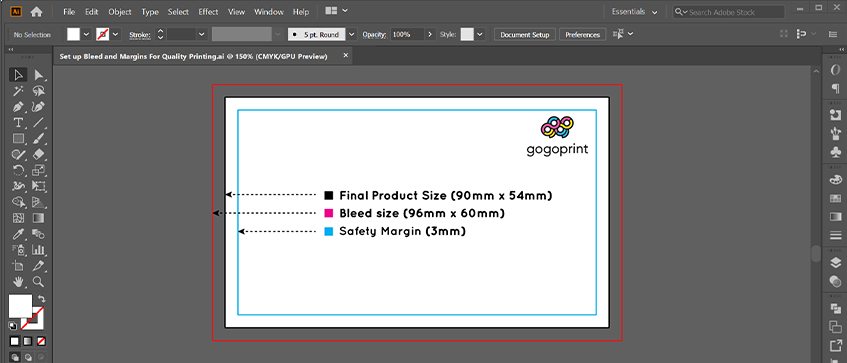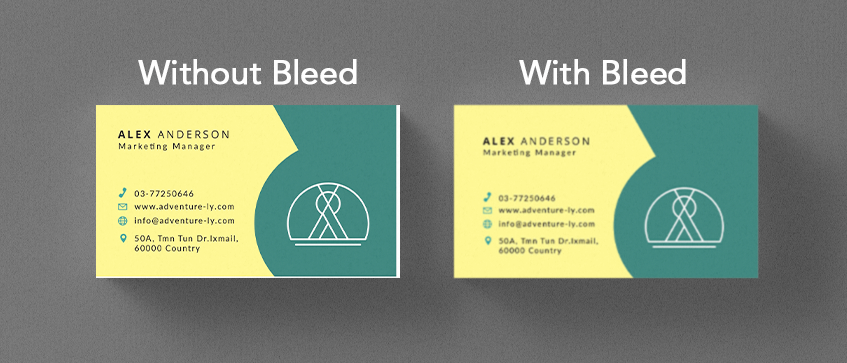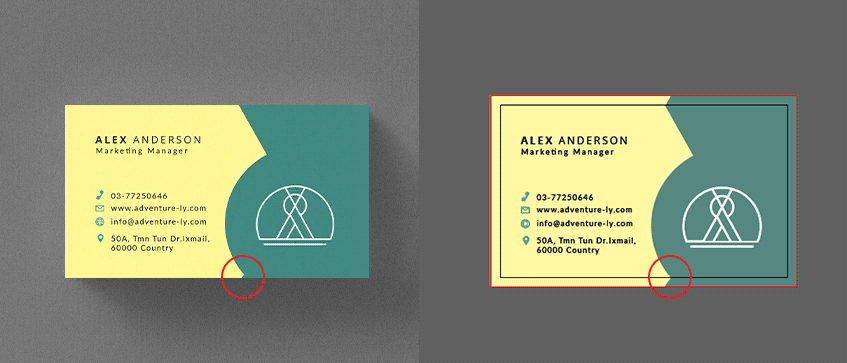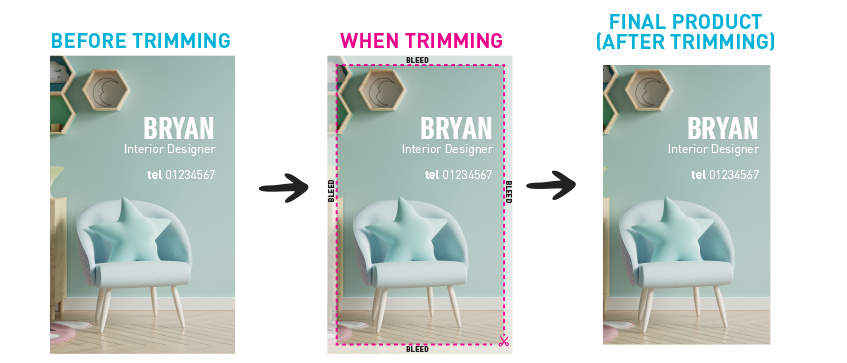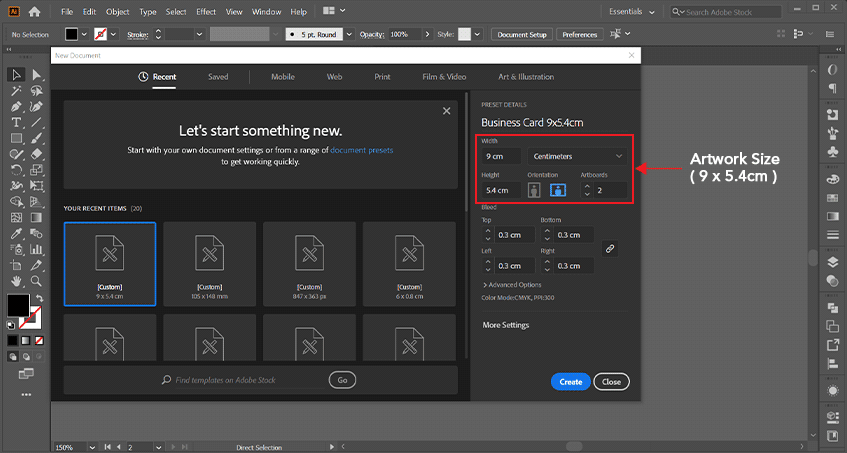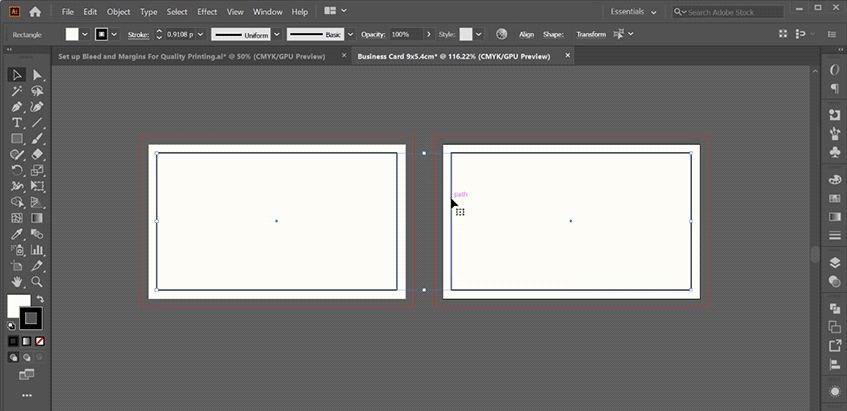We won’t emphasize this enough: Preparing your artwork file before sending it to your printing company is crucial for the quality of the printing! To make sure that you will receive high-quality final products, all aspects of your artwork need to be closed perfectly. In this article, we will talk about bleed and margins, one of the crucial aspects of artwork closing. For an overview and tutorials on all the artwork closing steps, please refer to our How to Close Artwork section.
While we already discussed the setup of bleed and margin on our blog, in this post we will focus more on explaining what happens when you don’t set it up properly. Let’s have a look at a couple of examples of what can go wrong if bleed is not set up properly.
Understanding the Terminology: Bleed and Margins
Before we dive into the complexities, it's essential to fully understand what we mean by 'bleed' and 'margins.' 'Bleed' refers to the area of your artwork that extends beyond the actual dimensions of the document. It acts as a cushion for the slight inconsistencies that can occur during the printing process. 'Margins,' on the other hand, are the 'safe areas' where crucial information and design elements should be placed to prevent them from being cut off during the final trimming process.
Why Bleed and Margins are important?
First, here’s a refresher, basically for digital and offset printing machines, they never actually print accurately to the millimeter. Due to [small] variations in the position of the paper, as well as the position of the mechanical elements of the machine, you can always expect some small differences across the printed sheets.
Taken alone, this is not really an issue. However, large printed sheets need to be cut into individual products, and this is where problems can occur. Without bleed and margins, some important information can be cut out, or your products can end up with a white border around the artwork. That is exactly why Bleed adds a safety buffer to ensure that you won’t have a white edge around your artwork after cutting, and safety margins ensure that no important content will be cut off.
The Technical Side of Bleed and Margins
Now that you know why these elements are essential, it's time to delve into the technical aspects. It's important to know that the industry standard for bleed is typically 3mm, and for safety margins, another 3mm is usually recommended. Knowing these measurements can significantly help in setting up your design software accordingly.
Problems Caused By Wrong Bleed and Margin Settings:
Below we will discuss some real-life examples of artwork files with faulty bleed and margin settings. Even though Gogoprint has an artwork team who will check and correct your artwork files before sending them to the factory, it’s always best to correctly add the bleed and margin on your side, to make sure we avoid all errors. Indeed, if you don’t add bleed, it can become complicated for our team to fix it, and a trained eye might notice the fixes.
White borders around your artwork
When there is no bleed in your artwork file, and no fix can be applied, your products will end up with a white border around the edge of your artwork, as seen in the image above.
So how do we solve this?
Most of the time when there is no bleed, our team will add 3mm to the edge of your artwork by taking the reflection of the 3mm before the edge. By doing this, we can make sure that there is no white border around your artwork after cutting. However, it is a quick fix and therefore does not always look perfect. In some cases, it will even affect the printed result.
The picture above explains what would happen when the reflection bleed appears after trimming and where the reflection bleed came from. The key to avoiding this issue is: Adding 3mm of proper bleed!
How do we avoid these issues?
1. Always add 3mm of bleed on all sides of your artwork, to ensure that there is no white area surrounding your printed artwork after trimming.
2. Always set safety margins of 3mm on all sides and keep all important information within those margins to ensure that no part of your artwork can get cut off.
3. Make sure your file is ‘print-ready’, we have prepared an artwork checklist article, if you see that everything in the checklist is ticked then you can send your file for printing.
How to set up bleeds and margins?
If you’re new to the printing world, you may refer to our previous blog which explains the basic guidelines when setting up an artwork. Setting up bleed and margins is not difficult once you learn the ropes. In this article, we will teach you how to set up bleed and margin in Adobe Illustrator in just 3 steps.
Set up Bleed and Margin in Adobe Illustrator in 3 steps:
1. First, create your artboard in the exact dimensions that you would like to have your products printed. For example, for 9x5.4cm name cards, set the dimensions of the artboard to 9cm x 5.4cm. Then, set 3mm of bleed on all sides of the artboard during the setup, you can refer to the graphic above for how it is done.
Tip: In case you missed out on adding the bleed in the first step, you can also add the bleed later on by clicking on the “File” button on the top left bar, then accessing the “Document Setup” option (File > Document Setup). A pop-up will appear and then you can set up the bleed-through there as shown in the graphic above.
Once the bleed is set, you should see a red border around your artboard.
2. To add safety margins, select the rectangle tool (the tool is in the bar on the left), create a rectangle that is the same dimensions as your artwork file, and then deduct 3mm on each side. In our example, that would be a rectangle of 8.4x4.8cm. Make sure the rectangle is placed in the centre of your artboard. Once that is done, right-click on the rectangle, then choose "Make Guides" or go to the top tab to access the “View” setting (View > Guides > Make Guides).
3. When you add images or graphic shapes to your design, make sure their border is right at the red bleed line. When adding text and other important information, make sure to keep them within the blue safety margin. This will avoid any risk of cutting out important elements.
Conclusion
It’s as simple as that. If you want perfect prints and in-time production, be sure to follow our bleed instructions. Proper settings are really one of the most important settings for perfect printing. If you wish to know more about printing, check out our other blogs!
Related Articles:
How to close artwork in Illustrator
Video Tutorial: Creating Professional & Print-Ready Business Cards - Adobe Illustrator
Video Tutorial: Creating Professional & Print-Ready Business Cards - Microsoft Word






